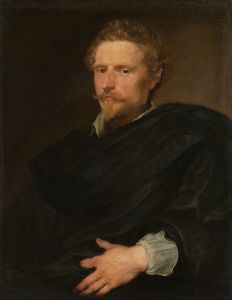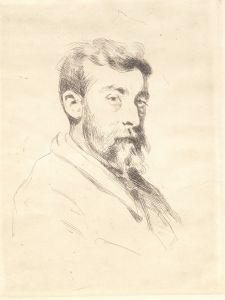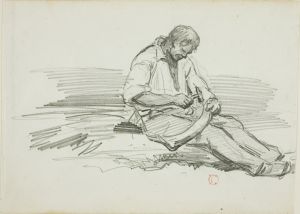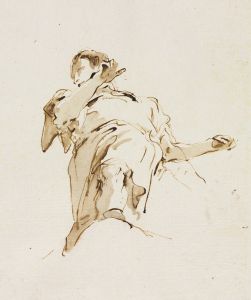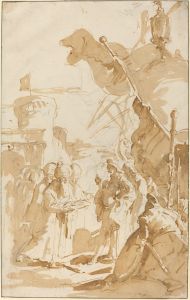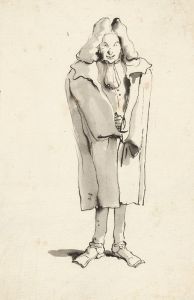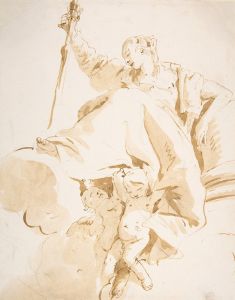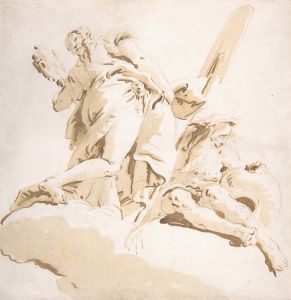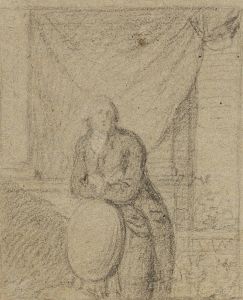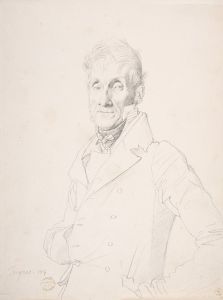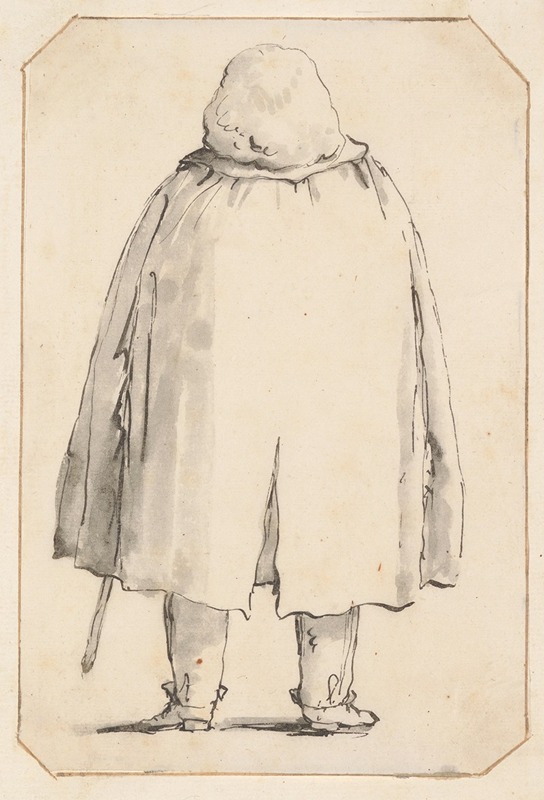
Caricature of a Man in a Voluminous Cloak, Carrying a Walking Stick, Seen from Behind
A hand-painted replica of Giovanni Battista Tiepolo’s masterpiece Caricature of a Man in a Voluminous Cloak, Carrying a Walking Stick, Seen from Behind, meticulously crafted by professional artists to capture the true essence of the original. Each piece is created with museum-quality canvas and rare mineral pigments, carefully painted by experienced artists with delicate brushstrokes and rich, layered colors to perfectly recreate the texture of the original artwork. Unlike machine-printed reproductions, this hand-painted version brings the painting to life, infused with the artist’s emotions and skill in every stroke. Whether for personal collection or home decoration, it instantly elevates the artistic atmosphere of any space.
Giovanni Battista Tiepolo, an Italian painter and printmaker, is renowned for his distinctive style that combines elements of the Baroque and Rococo periods. One of his lesser-known works is the "Caricature of a Man in a Voluminous Cloak, Carrying a Walking Stick, Seen from Behind." This piece is a fine example of Tiepolo's skill in caricature, a genre that he explored alongside his more formal religious and historical compositions.
Tiepolo was born in Venice in 1696 and became one of the most successful and prolific artists of the 18th century. He was known for his grand frescoes and altarpieces, but he also produced a significant number of drawings and prints. His caricatures, in particular, demonstrate his keen eye for human nature and his ability to capture the essence of a character with minimal lines.
The "Caricature of a Man in a Voluminous Cloak, Carrying a Walking Stick, Seen from Behind" is a drawing that exemplifies Tiepolo's talent in this area. The artwork depicts a man from behind, draped in a large cloak that obscures most of his form. He is holding a walking stick, which suggests a leisurely stroll or perhaps a journey. The voluminous cloak adds a sense of mystery and drama to the figure, as the viewer is left to imagine the man's identity and purpose.
Tiepolo's caricatures often featured exaggerated features and poses, highlighting the quirks and idiosyncrasies of his subjects. In this particular drawing, the emphasis is on the cloak and the walking stick, which are rendered with a fluidity and grace that suggest movement and personality. The simplicity of the lines and the economy of detail are characteristic of Tiepolo's caricature style, which relies on suggestion rather than explicit depiction.
The context in which Tiepolo created this drawing is not well-documented, but it is likely that it was part of a series of studies or sketches. Caricature was a popular form of entertainment and social commentary in the 18th century, and artists like Tiepolo used it to explore themes of identity, status, and human folly. This particular work may have been intended as a humorous take on a contemporary figure or simply as an exercise in capturing character through minimal means.
Tiepolo's caricatures, including this one, are valued for their insight into the artist's creative process and his ability to convey complex ideas with simplicity and wit. They offer a glimpse into the lighter side of Tiepolo's oeuvre, contrasting with the grandeur and formality of his large-scale paintings and frescoes.
Today, Tiepolo's caricatures are appreciated not only for their artistic merit but also for their historical significance. They provide a window into the social and cultural milieu of 18th-century Venice, reflecting the fashions, attitudes, and humor of the time. As with many of his works, Tiepolo's caricatures continue to be studied and admired for their technical skill and their ability to capture the essence of human character with elegance and economy.






